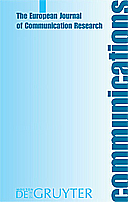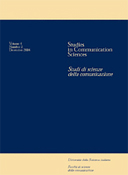 About ten years after The persuasion handbook: Developments in theory and practice (Dillard & Pfau, 2002), James Dillard and Lijiang Shen publish an updated, new version. In their SAGE Handbook of persuasion, they host a collection of 23 chapters that deal with fundamental issues in persuasion, that present a panorama of important theories and perspectives, and that demonstrate the importance of persuasion in diverse contexts and settings. […] Finally, how does this book relate to other books? For practical advice on how to design messages, Persuasive messages: The process of influence by William Benoit and Pamela Benoit (reviewed in this journal: Hornikx, 2008), nicely complements this handbook. For precise avenues that future research should focus on, Persuasion by Daniel O’Keefe (also reviewed in this journal: Hornikx, 2003) is excellent reading, but it does not outline the important contexts and settings in which persuasion plays a role, such as politics, health, and technology. In the broad spectrum of persuasion books on offer, this SAGE Handbook of persuasion is among the most prominent ones: written by some of the best scholars in the field, it covers a wide range of topics in a concise manner.
About ten years after The persuasion handbook: Developments in theory and practice (Dillard & Pfau, 2002), James Dillard and Lijiang Shen publish an updated, new version. In their SAGE Handbook of persuasion, they host a collection of 23 chapters that deal with fundamental issues in persuasion, that present a panorama of important theories and perspectives, and that demonstrate the importance of persuasion in diverse contexts and settings. […] Finally, how does this book relate to other books? For practical advice on how to design messages, Persuasive messages: The process of influence by William Benoit and Pamela Benoit (reviewed in this journal: Hornikx, 2008), nicely complements this handbook. For precise avenues that future research should focus on, Persuasion by Daniel O’Keefe (also reviewed in this journal: Hornikx, 2003) is excellent reading, but it does not outline the important contexts and settings in which persuasion plays a role, such as politics, health, and technology. In the broad spectrum of persuasion books on offer, this SAGE Handbook of persuasion is among the most prominent ones: written by some of the best scholars in the field, it covers a wide range of topics in a concise manner.
- Hornikx, J. (2013). Review of “The Sage handbook of persuasion: Developments in theory and practice (2nd edition)” by James Dillard and Lijiang Shen. Information Design Journal, 20 (2), 187-189. [link]




